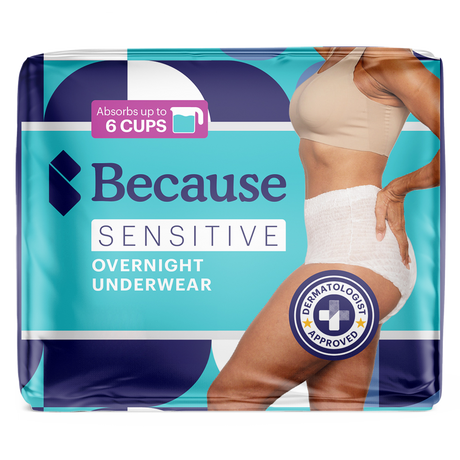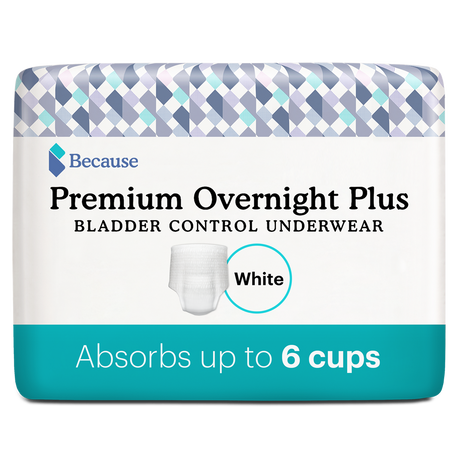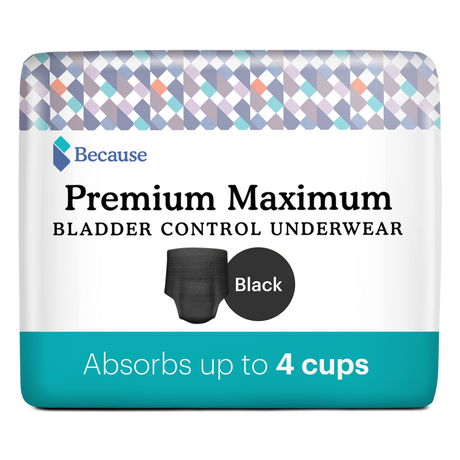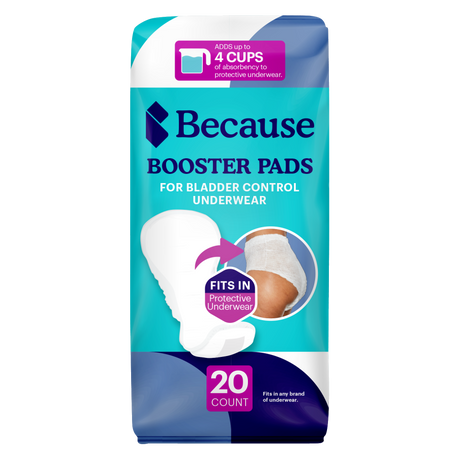Urinary incontinence (UI) is a challenge for over a third of older adults, so if you live with UI, you are not alone. Knowledge about UI is increasing, but despite how common it is, there is still a damaging stigma around this challenge.
If you live with UI, it can also become a challenge to feel in control of your own life. However, there are exercises and tips to help you regain this control and get back to doing the things you love! This guide will help you understand your pelvic floor muscles and how bladder exercises can help you regain strength in these muscles and control your bladder.
Bladder and Pelvic Floor Muscles
Bladder control exercises target a specific group of muscles known as your pelvic floor muscles. The pelvic floor is located at the very end of your core muscles. They stretch in a hammock shape from the pubic bone to the tailbone.
The female pelvic floor supports the womb, bladder, bowels, and rectum. These muscles are responsible for controlling the stopping and releasing of urine flow. They’re also responsible for relaxing the anus and bowel muscles.
Isolating Your Bladder Muscles
Before you can perform bladder control exercises, it’s important to understand where your pelvic floor muscles are on your body and how to isolate them.
To isolate your pelvic floor muscles, here are some tips. Find somewhere comfortable to lay down on your back or sit in a relaxed position. Imagine that you are emptying your bladder. You should feel your pelvic floor muscles relax. Now imagine that you have to suddenly stop urine flow. You should be able to feel your pelvic floor muscles tighten as if you are actually holding back urine.
If you’re still unsure about which muscles are part of your pelvic floor and which are not, here are some guidelines:
- When you tighten your pelvic floor muscles, you shouldn’t feel tightening in your legs. If your thighs or buttocks tighten as you are trying to isolate your pelvic floor, this is unassociated with your bladder muscles.
- Your stomach muscles are also unassociated with your pelvic floor muscles.
- While contracting the pelvic floor, you should be able to breathe easily. If you stop breathing, hold your breath, or are gasping for air, chances are you’re contracting the wrong muscles.
- The genitals, urethra, tailbone, and anus are part of the pelvic floor.
Benefits of Bladder Exercises
If you live with overactive bladder (OAB) or urinary incontinence (UI), bladder exercises can help you strengthen your bladder muscles and strengthen control of your pelvic muscles and regain control of your life!
Here are some of the benefits of performing bladder control exercises.
Help with Urinary Incontinence
Urinary Incontinence (UI) is a challenge for more than a third of older adults. Bladder control exercises can help you regain control of your bladder from urinary incontinence and help you prevent incontinence in the future.
Urinary incontinence in women can be caused by a variety of factors. In addition to the weakening of bladder muscles that comes with age, women go through pregnancy, childbirth, and menopause that can affect the urinary tract, bladder, and pelvic floor muscles.
Anatomy also plays a role. The female urethra is much shorter than the male urethra, which can make women more likely to develop UI if the urinary tract has been damaged. The two most common forms of UI are stress incontinence and urge incontinence.
Stress incontinence is characterized by leaking urine while jumping, coughing, sneezing, or doing any activity that puts stress on the bladder.
Urge incontinence is characterized by the frequent and strong urge to urinate, even if you’ve just emptied your bladder. This form of incontinence is very similar to overactive bladder (OAB), but it becomes incontinence when the intense urge causes your bladder muscles to release urine, even if you’re nowhere near the bathroom.
Bladder control exercises have benefits associated with the increased control of urinary incontinence. They strengthen the muscles that hold in urine. By performing bladder control exercises, you can train your muscles and strengthen your ability to hold in urine until you can make it to the restroom.
Exercises to Do for Your Bladder
1. Kegel Exercises
Kegels are a great way to strengthen your pelvic floor and bladder muscles so you can regain control and stop urine flow. And the best part is, you can perform these exercises pretty much anywhere once you get the hang of it! They’re simple exercises to implement into your daily life that can help you control UI and regain your freedom.
These are the steps to performing Kegel exercises!
- Isolate your pelvic floor muscles. You can use a visualization method or focus on trying to stop an imaginary flow of urine.
- Contract these muscles as though you’re stopping urine flow. Tighten them as much as possible so they feel as though they’re lifting up.
- Hold this position for 3 to 5 seconds and relax.
- Take a small rest and repeat the exercise.
Aim to perform kegel exercises for 3 sets of 10 repetitions per day, holding for 5 seconds to start and working up to 10 seconds. When you notice an increase in strength in your bladder muscles, you may increase the length of time you hold the kegel movements.
2. Squats
Another exercise to enhance bladder control is squats. Squats target your glute muscles and your pelvic muscles, so they’re a great way to strengthen muscles that support your pelvic floor.
To perform squats, follow these steps:
- Stand up straight with your feet shoulder-width apart
- Bend your knees and lower your buttocks into a sitting position. Be sure to keep your back straight and keep your weight on your heels.
- Once you’ve lowered as far as you can go without discomfort or pain, use your glute muscles, pelvis, and legs to push your body back up into a standing position.
You can do as many as eight to ten times, resting for a few seconds in between each squat. Be sure to breathe deeply throughout the exercise and move in slow, controlled movements. If you move too fast, you could get hurt or fall.
Don’t focus on performing a squat if it’s painful for you or causes discomfort. While a squat will work your muscles, it should not hurt while being performed. If you do have any pain or discomfort, talk to your doctor or a health professional.
3. Glute Bridge
Another exercise to enhance your bladder control and strength is the bridge. Even though a bridge targets your glute muscles, these muscles support your pelvic floor muscles and can help strengthen them as well.
To perform a bridge:
- Lay down comfortably on a yoga mat or carpeted surface.
- Bend your knees and keep your feet flat on the floor with your arms at your sides.
- Lift your pelvis into the air (it may look like a slow pelvic thrust) and tighten your glute muscles and pelvis muscles during the movement.
- Continue contracting these muscles for 5 to 10 seconds and then relax.
- Slowly bring your body back down to the mat so you’re in the same position as when you started.
- Take a small rest and repeat up to 10 times.
- Be sure to breathe throughout the exercise and move in slow, controlled movements.
4. Squeeze and Release
The squeeze and release is another exercise that can target your bladder muscles. This exercise is basically a faster version of kegel exercises, with no attempt to hold the position.
To perform the squeeze and release:
- Sit or stand comfortably and isolate your pelvic floor muscles.
- Once isolated, contract these muscles as quickly as possible and release them without holding the position.
- Take a short rest of about 5 seconds and repeat these contractions 10 to 20 times.
You can perform these up to three times a day!
Other Tips for Living with UI
Thankfully, there is help for urinary incontinence, and it doesn’t have to be something inevitable you can’t take control of. In addition to the exercises listed above, there are a variety of resources that can help you manage incontinence and get back to doing the activities you enjoy.
From skincare products to help you stay clean and moisturized, to adult underwear designed to fit seamlessly into your life, there are tons of ways to protect your skin and live comfortably. For more information on managing incontinence as you age, learn about which incontinence products are best for you!
If you have noticed less control over your bladder and weakening of your pelvic floor muscles, schedule an appointment with your general care physician. UI needs to be diagnosed by a doctor, so informing your doctor of any health conditions you’ve recently had can help them determine if you have UI. Your doctor may also run various tests to diagnose UI.
Summary
Urinary incontinence is a struggle for many, but thankfully, there are many ways to treat it and help with it. Incorporate these four exercises in your workout routine to strengthen your bladder muscles, regain control of your bladder, and get your life back!
To learn more about bladder exercises, UI, and hear real people’s incontinence stories, explore Because Market’s resources here!
Sources:
Aeroflow Urology. (n.d.). The Best At-Home Incontinence Exercises. https://aeroflowurology.com/the-best-at-home-incontinence-exercises/Office on Women's Health. (n.d.). Urinary Incontinence. https://www.womenshealth.gov/a-z-topics/urinary-incontinence
Johns Hopkins Medicine. (n.d.). Urinary Incontinence in Women. https://www.hopkinsmedicine.org/health/conditions-and-diseases/urinary-incontinence/urinary-incontinence-in-women
Mayo Clinic. (n.d.). Kegel Exercises: A How-To Guide for Women. https://www.mayoclinic.org/healthy-lifestyle/womens-health/in-depth/kegel-exercises/art-20045283
Harvard Health Publishing. (n.d.). Types of Urinary Incontinence. https://www.health.harvard.edu/bladder-and-bowel/types-of-urinary-incontinence
Pelvic Floor First. (n.d.). The Pelvic Floor. http://www.pelvicfloorfirst.org.au/pages/the-pelvic-floor.html









